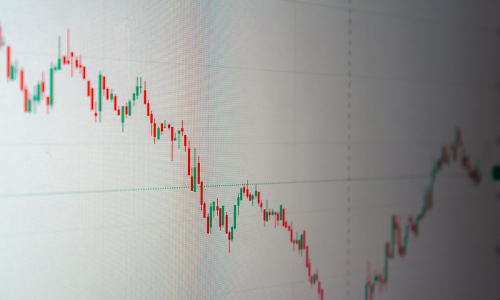As of mid-2025, the Australian Securities Exchange (ASX) presents a compelling array of undervalued investment opportunities across various sectors. With the S&P/ASX 200 hitting record highs, driven by global capital seeking alternatives to U.S. markets amidst trade tensions and tariff hikes , discerning investors can identify stocks trading below their intrinsic value. Below are some of the most promising undervalued ASX stocks to consider.
1. Iluka Resources Ltd (ASX: ILU)
Sector: Materials
Market Cap: ~$4.7 billion
Iluka Resources is one of the most undervalued ASX mining stocks in 2025. Best known for zircon production, Iluka is now aggressively expanding into rare earths—critical minerals used in electric vehicles and renewable technologies.
The company’s Eneabba refinery project, backed by a $1.65 billion government loan, positions it as a key future supplier in the global clean energy supply chain. Despite this, Iluka trades at only 0.55 times Net Asset Value (NAV), with a free cash flow yield of 14%. Analysts believe the stock could see over 35% upside.
Why it’s undervalued: Low EV/EBITDA multiple of 5x vs peers at 16x.
2. SiteMinder Ltd (ASX: SDR)
Sector: Technology
Market Cap: ~$1.3 billion
SiteMinder is a cloud-based hotel management platform used by thousands of hotels worldwide. With the rebound in global travel, SiteMinder has experienced impressive revenue growth—up 26% year-on-year in FY24.
Despite this, its share price remains 35% below its estimated fair value of A$7.43. As profitability improves and market confidence grows, SiteMinder could deliver significant returns for growth-focused investors.
Why it’s undervalued: Current price is A$4.87 vs analyst target of A$7.43.
3. Nanosonics Ltd (ASX: NAN)
Sector: Healthcare
Market Cap: ~$1.4 billion
Nanosonics develops and markets infection prevention technologies, such as its flagship Trophon device for ultrasound probe disinfection. As global demand for healthcare hygiene continues to grow, so does Nanosonics’ addressable market.
Despite recent market volatility, the company has revised guidance upward and remains profitable. Currently trading around A$4.64, it’s estimated to be worth at least A$7.06 per share.
Why it’s undervalued: Healthy balance sheet, strong recurring revenue, and trading 30% below fair value.
4. Lynas Rare Earths (ASX: LYC)
Sector: Materials
Market Cap: ~$6.2 billion
Lynas is the only significant producer of rare earths outside of China. These minerals are vital for electric vehicles, wind turbines, and electronics.
Lynas’ long-term demand outlook remains strong, but the stock has declined due to short-term pricing pressures. Analysts forecast a rebound, supported by the company’s Mt Weld expansion and U.S. processing plant.
Why it’s undervalued: Current share price of A$7.75 is well below the fair value estimate of A$13.24.
5. Viva Energy Group Ltd (ASX: VEA)
Sector: Energy
Market Cap: ~$4.5 billion
Viva Energy operates fuel and convenience retail businesses across Australia. It owns and operates one of the country’s few remaining refineries and supplies major brands like Shell.
Despite sector challenges, Viva has strengthened its retail segment and delivered consistent dividends. Trading at just 6.4x estimated 2026 EBIT, the company offers both growth and income potential.
Why it’s undervalued: Strong forecast dividend yield of 8.9%, with significant upside as fuel margins recover.
6. Adairs Ltd (ASX: ADH)
Sector: Retail
Market Cap: ~$350 million
Adairs is a popular Australian homewares retailer. While retail has faced inflationary and consumer spending pressures, Adairs has continued to generate healthy profits and pay reliable dividends.
With a current dividend yield of 6.7% (expected to grow to over 8% in FY26), Adairs offers income investors a great value play. It’s also trading well below its analyst price target of A$2.85.
Why it’s undervalued: Dividend stock with strong cash flow and cost control in place.
7. Charter Hall Retail REIT (ASX: CQR)
Sector: Real Estate
Market Cap: ~$2 billion
Charter Hall Retail REIT focuses on high-quality convenience and neighborhood shopping centers, often anchored by Coles and Woolworths. These properties are resilient during economic downturns.
With a distribution yield of 7.8% and trading at a 30% discount to its net tangible asset (NTA) value, CQR is one of the most undervalued ASX REITs right now.
Why it’s undervalued: Defensive income play with reliable tenants and discounted property valuation.
8. Reliance Worldwide Corporation (ASX: RWC)
Sector: Industrials
Market Cap: ~$3.2 billion
Reliance is a leading manufacturer of plumbing fittings and fixtures. The company has significant exposure to the North American market, which continues to drive revenue and earnings growth.
Despite a strong financial performance in FY24 (net income up 31.6%), the stock trades at a modest P/E of 13.7, making it attractive for value investors.
Why it’s undervalued: Global footprint, steady growth, and solid balance sheet with improving margins.
Final Thoughts: Should You Invest in Undervalued ASX Stocks?
Finding the best undervalued stocks on the ASX in 2025 involves more than just looking at low prices. You want companies with strong fundamentals, proven management teams, and long-term growth prospects. Whether you’re seeking capital gains, dividends, or both, these stocks provide opportunities to build a resilient portfolio.
However, always do your own due diligence or consult with a financial advisor before investing. Market conditions can change quickly, and it’s important to align your stock picks with your overall investment goals and risk tolerance.
FAQs: Most Undervalued ASX Stocks in 2025
Q: What is an undervalued stock?
A: An undervalued stock is one that is trading below its intrinsic or fair market value, often due to market overreactions or temporary setbacks.
Q: Are undervalued stocks a good investment?
A: Yes, if selected carefully, undervalued stocks can offer significant upside potential and lower downside risk.
Q: How do I find undervalued ASX stocks?
A: Use metrics like price-to-earnings (P/E) ratios, price-to-book (P/B) ratios, dividend yields, and discounted cash flow (DCF) valuations. Look for companies with strong fundamentals but temporarily weak sentiment.






